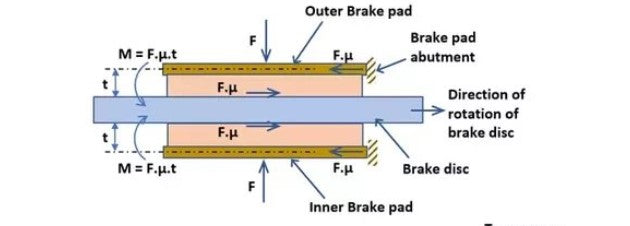630.360.2548

Understanding brake pad wear patterns
Understanding your brake pad wear patters is important to diagnosing the general condition of your brake system. This guide can help you identify common issues.
Inboard or Outboard side uneven wear

One pad has significantly less friction material than the other pad.
This happens when the caliper piston is not returning to the rest position due to a worn seal, damage, or corrosion. Inspect caliper for residual pressure and guide pins or piston boot damage, respectively. Wear like this is caused by the pad continuing to ride on the rotor after the caliper releases. Pads catching on the guide pins or the pistons not retracting (bad seals or damaged pistons) Service or replace the guide pins, seals, or the entire caliper, and replace the brake pads.
Tapered Pad Wear
The friction material is worn in a horizontal or vertical wedge pattern.
This kind of wear is caused by improper pad installation, bad seals on one piston, or retention pin catching. The procedure for correcting this kind of wear is the same as correcting side to side pad wear.
Cracking, Glazing, or Lifted Edges on the Pads
The friction material is physically damaged and shows signs of thermal distress.

This can be caused by many things. Overuse, improper break-in procedure, hydraulic system problems, seized caliper components, defective pads, and the parking brake not fully retracting are some common problems. This can be corrected by replacing and breaking-in the new pads properly. The parking brake may also need adjusting.
Overlapping Friction Material
The top edge of the pad overlaps the top of the rotor.
This can be caused by wear on the guide pins, caliper or caliper bracket or having the wrong rotor or pad on the vehicle. To correct this kind of wear, replace the pads and fit the vehicle with OE specification diameter rotors.


